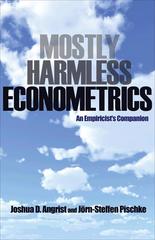Question
Suppose the real rural wage is $1.7 per day. Urban modern/formal sector employment can be obtained with a 0.25 probability and pays $5 per day.
Suppose the real rural wage is $1.7 per day. Urban modern/formal sector employment can be obtained with a 0.25 probability and pays $5 per day. The urban traditional/informal sector pays 80 cents per day. Assume there is only one period. Assume there is no urban-to-rural migration mobility cost.
a. What happens if there are mobility costs equal to 10 cents?
b. What happens if there are mobility costs equal to 20 cents?
c. Return to the original numbers (no mobility costs). Now assume that due to a slum clearance program there is no urban traditional/informal sector. Urban modern/formal sector employment can still be obtained with a 0.25 probability and pays $5 per day. If the person doesn't get a job in the formal sector, she is thus unemployed. Will there be any rural-urban migration as things stand?
d. Return to the original numbers (no mobility costs). Still assume that there is no urban traditional/informal sector. Urban modern/formal sector employment can still be obtained with a 0.25 probability but now pays $7 per day. If the person doesn't get a job in the formal sector, she is unemployed. Will there be any rural-urban migration as things stand?
e. Return to the original numbers (no mobility costs, and urban modern/formal sector employment pays $5). Assume the urban traditional sector income decreases as a result of rural-urban migration leading to more people working in the traditional sector. What would the urban traditional sector daily income have to be to induce no net rural-urban migration?
f. Return to the original numbers (no mobility costs). Assume wages in all sectors are inflexible. What else could adjust in this model to lead to equilibrium (at the equilibrium, there is no migration)? Be specific - how much does it adjust and what is the intuition?
g. Return to the original numbers, but assume that the mobility costs are equal to 20 cents. Due to previous rural-to-urban migrants returning with many gifts to their village during the holidays, potential rural-to-urban migrants in these villages now (wrongly) believe that urban modern/formal sector employment can be obtained with a 0.50 probability. Will there be any rural-urban migration as things stand? If yes, is the migration decision "rational"? If yes, is the migration decision "optimal"? Explain your answer.
Step by Step Solution
There are 3 Steps involved in it
Step: 1

Get Instant Access to Expert-Tailored Solutions
See step-by-step solutions with expert insights and AI powered tools for academic success
Step: 2

Step: 3

Ace Your Homework with AI
Get the answers you need in no time with our AI-driven, step-by-step assistance
Get Started


